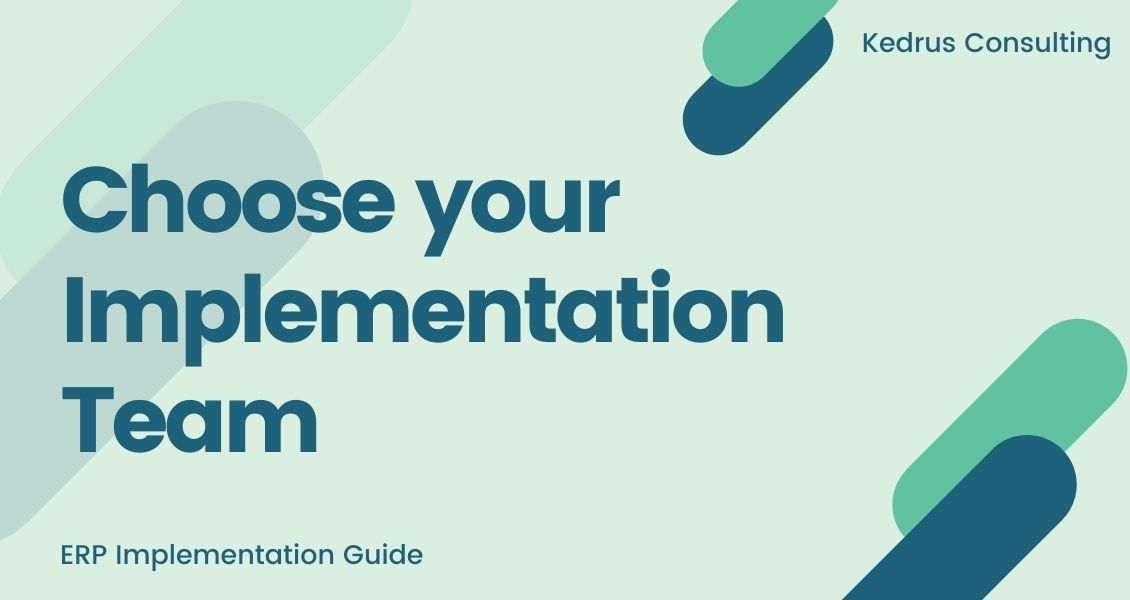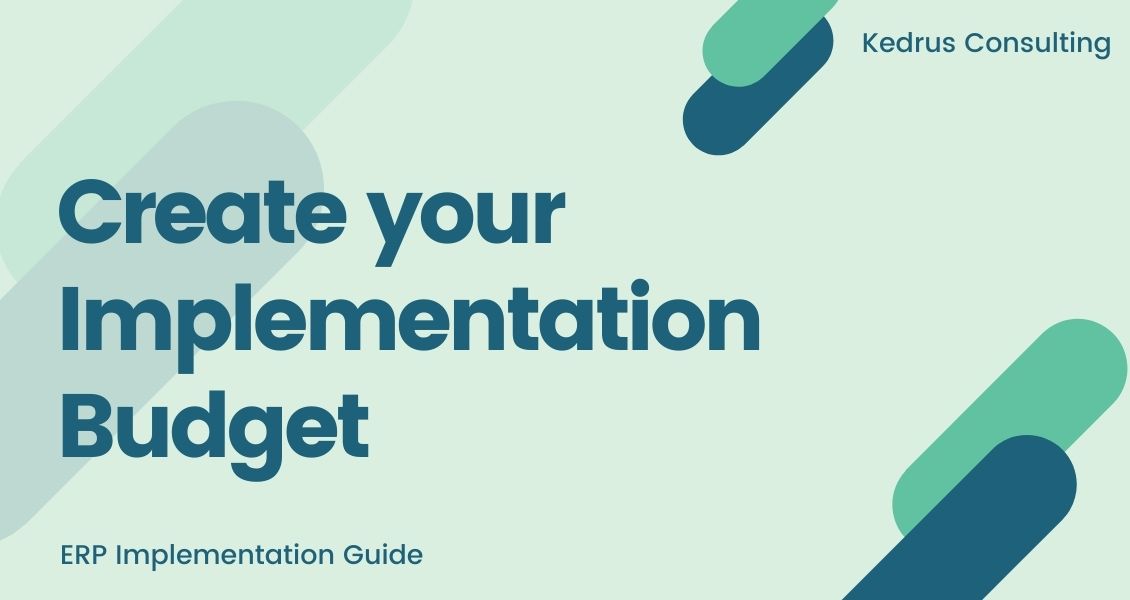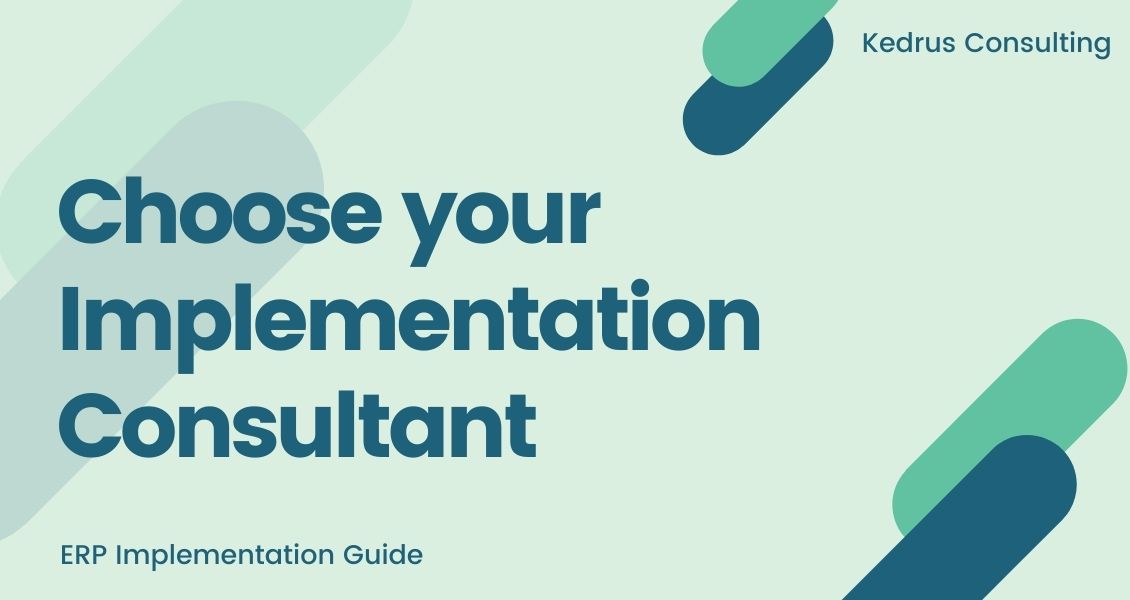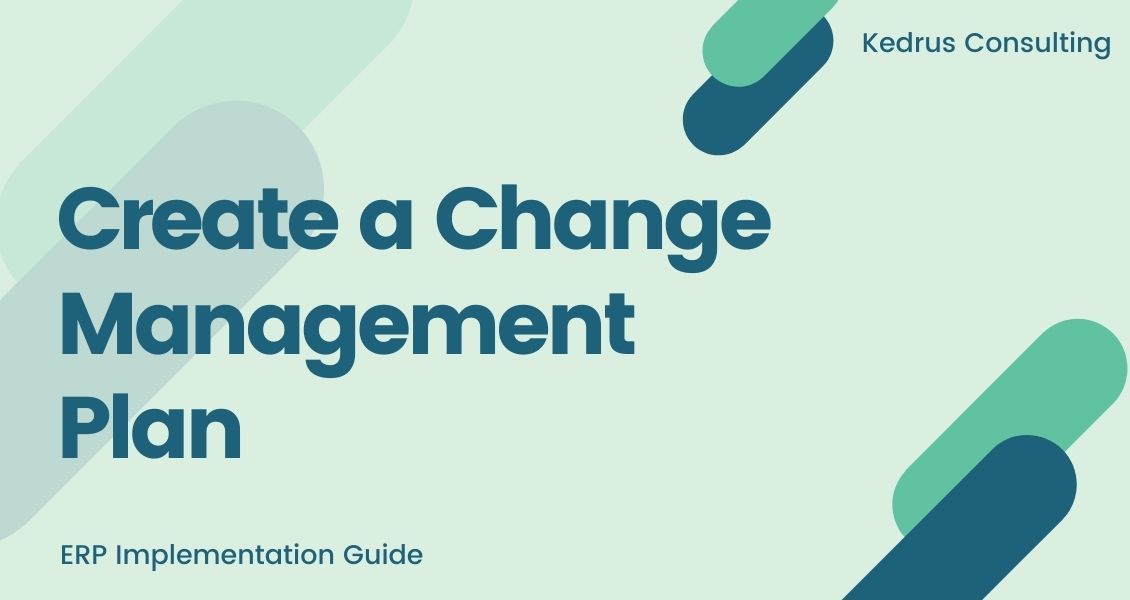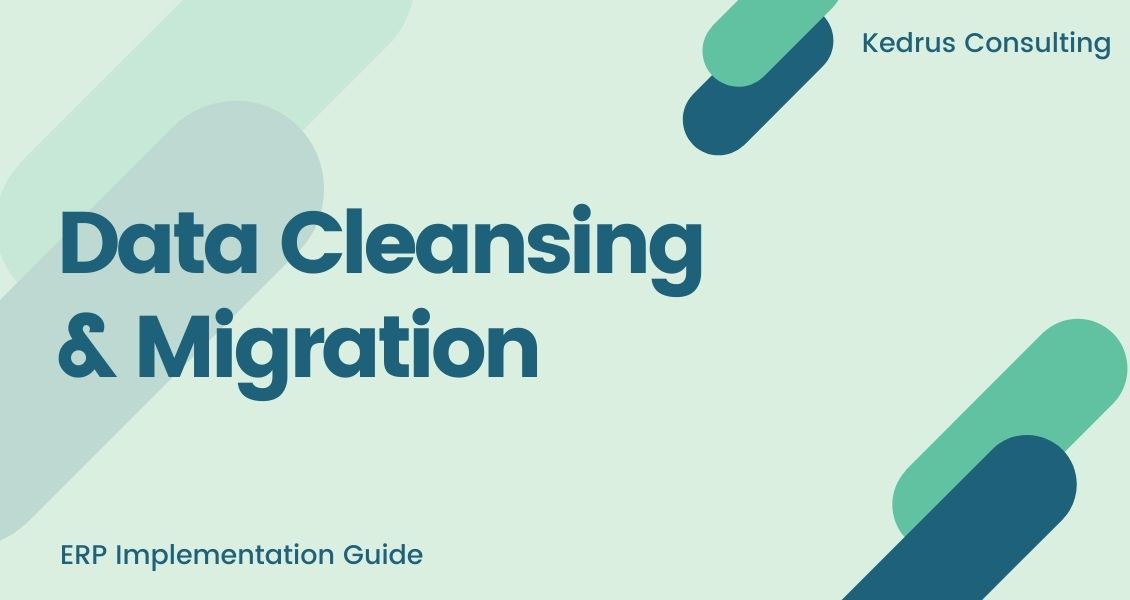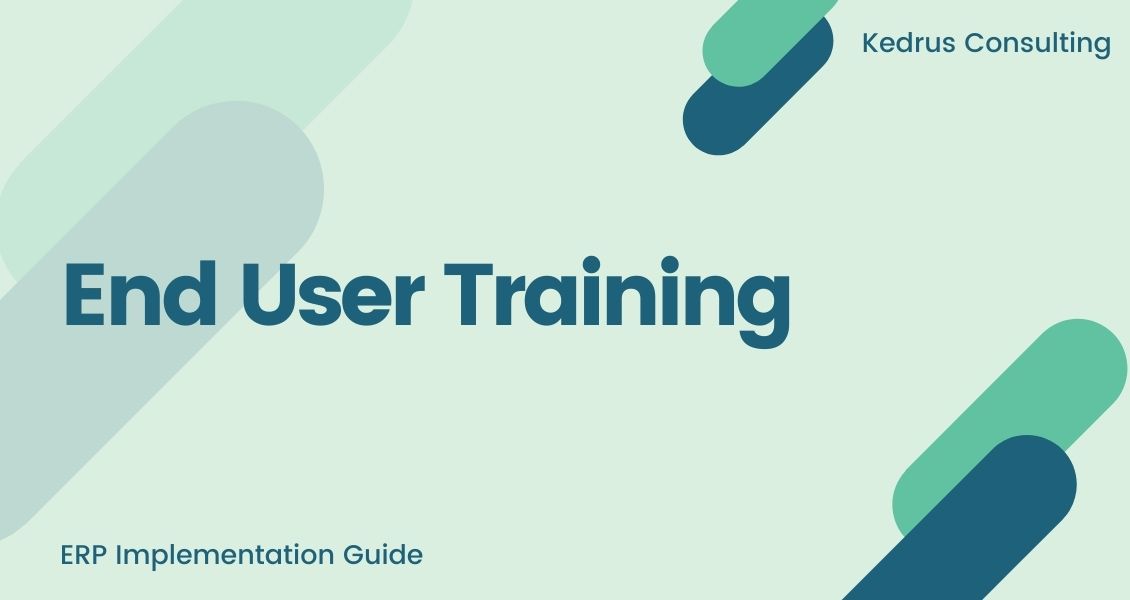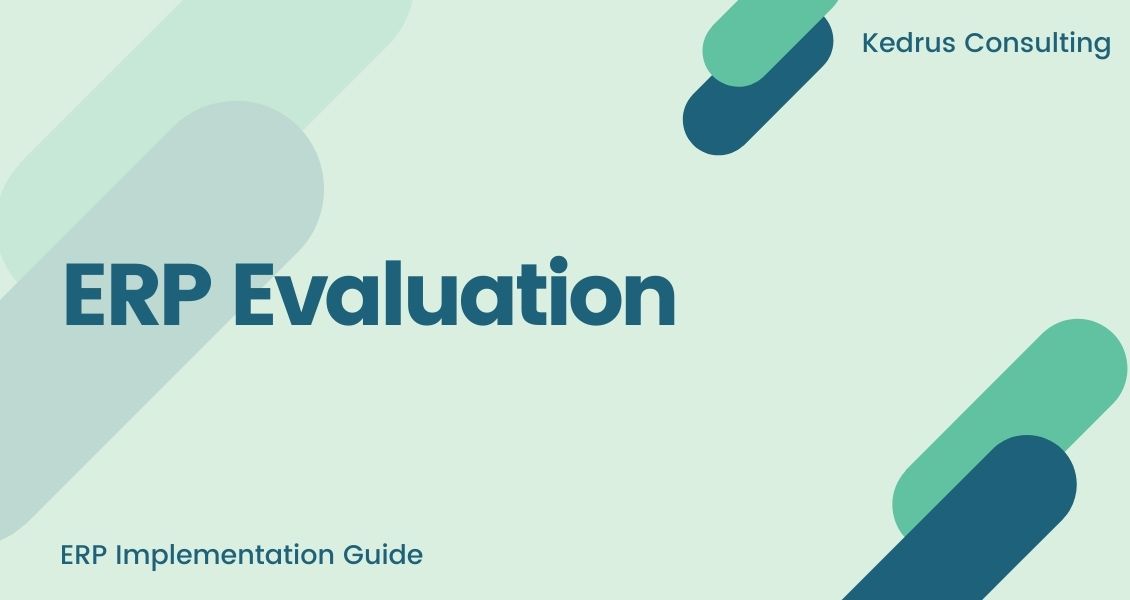Making Your ERP Implementation A Success
- May 19, 2021
- Posted by: Kedrus
- Categories: Business Innovation, Digital Transformation, Innovation

When it comes to executing any worthwhile venture, planning is absolutely crucial. The outcome of your venture will reveal the quality of planning and preparation that was put into it.
ERPs are no different. To ensure a successful implementation you would need to have a clear understanding of what the requirements are. This will guide your planning. There are several critical factors to consider when deciding to implement ERP for your organization. It would not suffice to just choose a great ERP or deployment partner. Your organization must be very clear about what successful implementation would mean as well as what indices to look out for and then allow this to guide you as you begin implementing your ERP solution or even choosing your partners.
We have an understanding that every great work especially ERP implementation requires having a competent team that is best suited for the job.
CHOOSE YOUR IMPLEMENTATION TEAM
Our first advice is that you put together your implementation team. This isn’t about handpicking a couple of folks within your organization randomly. Your implementation team needs to be made up of people who are well prepared to meet the demands that ERP implementation requires.
These are people who have a deep understanding of your business processes and culture.
There are some characteristics we advise our clients to look out for when choosing team members.
- Dependability
- In-depth understanding of business processes
- High-level team player
When it comes to choosing your team, certain roles are fundamental. You need to ensure that all the key user groups in your organization are represented on your team. This will help ensure that their needs and requirements are duly considered in the implementation process.
Every project requires a project manager. So you have to decide who that person would be; having a clear understanding of what would be required from anyone who will take on that role.
ERP implementation will certainly require IT support so ensure your organization has an IT team available.
CREATE YOUR IMPLEMENTATION BUDGET
It’s a common occurrence to see companies over budget for ERP implementation. This is often due to the misconception most organizations have about ERP solutions especially when due diligence has not been put in place.
We can guide you towards avoiding overbudgeting for your ERP implementation and losing scarce resources.
Our proposed solution entails the following:
Your First step is to develop a well-defined plan that covers your key objectives during the implementation process. From training to procurement and even consultancy.
Secondly, we recommend adopting the 75% rule for all expenses. So what’s the rule about? This entails that you set an expanse plan that allows you to spend only 75% of your budget within the duration of implementation from startup to go-live.
Your implementation plan is going to consist of hundreds of tasks that can be categorized into “needs” and “wants”. Your goal is to work towards ensuring 75% of your budget covers all of your needs and wants. But in the most critical scenario, you should prioritize your needs.
From our experience, we’ve come to understand that a huge part of your monthly expenses would come from the expertise you would need to hire like consultants. If you notice you are struggling to maintain the 75% expense rule, you can reduce the number of consultants you hire and make up for that by bringing in extra hands from your employees to handle the task. For each consultant, you’ll usually need about two to three employees to get the job done.
Here are key areas we believe your budget should cater for
- Vendor consultancy/implementation fees
- External consultancy fees (if applicable)
- Temporary shop floor/warehouse staff to cover production inefficiencies during implementation
- Customization and development work
- Implementation team overtime during the entirety of the project
- General staff overtime during ERP go-live
There may be other areas that are specific to your industry or niche, however, the ones mentioned above would often cater to most organizations. Focus on what applies to your organization and maintain our guidelines.
You’ll be in a safe zone by the end of your implementation. The real essence of the 75% rule is that it allows for an extra 25% of your budget to be available for handling unforeseen expenses or problems that may occur after you go live.
CHOOSE AN ERP IMPLEMENTATION CONSULTANT
Firstly you would need to decide if your organization would need an implementation consultant. Whether or not you need consultants depends on how much in house knowledge you have about your ERP software (and to what extent that software can be self-taught); how much time you have to complete the project; and how many modules and end users you are trying to implement at one time.
If you do determine that you need some ERP implementation consultants to guide you through the unfamiliar process of an implementation, then selecting the right implementation partner becomes as crucial to your success as selecting the right software vendor.
Some companies have quite a considerable knowledge of how to go about implementing ERP solutions and can pull it off themselves leveraging their in house capabilities. However, for most other organizations with little or no tech knowledge and IT experts. They would need an implementation consultant.
Before choosing an ERP implementation consultant, you must first define what your main goal is for implementing ERP as well as what key qualities you expect the consultant to have. It is typical to find different consultants stressing different areas. Depending on where they possess more strength. You just need to be clear on what you are looking out for and go for it.
CREATE A CHANGE MANAGEMENT PLAN
No matter how robust an ERP solution is, it can only be successful when people embrace it and use it as designed. Bringing your employees to that point will require a change management plan. Most organizations hardly consider the need for an effective change management program. This could lead to ERP failure. When the people who are responsible for executing business activities are unhappy with your new ERP installation, they will find it very difficult to use it. More seriously is the impact it would have on your revenue. For as long as business processes are stalled, revenue will definitely plunge.
So how can organizations handle change management especially when implementing an ERP solution?
We recommend the following:
- Identify everyone who will be affected by the change
- Communicate to this group what change would be coming
- Establish the compelling business reasons that make ERP necessary
- Explain how they must behave in other for the ERP project to succeed
- Ensure to give frequent project updates, reiterating steps two through four
Your goal is to come to the point where your employees have become conversant with the need for the change and are open to it.
In driving Change management, the project manager must be able to carry top management along at each step of the implementation journey. It’s necessary to point out that achieving this can however be quite challenging, but nonetheless, it is absolutely paramount. In other to achieve a successful implementation, certain critical changes would need to be made within the organization that would require approval from top management. Carrying them along will only make for easy approval when that time comes.
Ideally, you are expected to develop a change management plan when you want to carry out change management. This plan often helps to guide your efforts and ensure that you follow a well-laid-out path to achieving change management.
Not all organizations will approach change management the same way. Some will require a robust and extensive plan due to the size and nature of the organization while other small companies may not need extensive plans and processes.
Irrespective of your company size and structure, your change management plan should address these key areas:
- Confirm the type of support your approved ERP vendors will provide
- Create a user training timetable and inform concerned staff of when their slot is in advance
- Anticipate disruption to everyday activities and let the affected employees know
- Forecast your implementation costs and create an implementation budget
- Create a timeline for completing data migration, user training, testing and go-live activities
- Set the metrics by which you will measure ERP implementation success.
Three critical success factors in every ERP implementation project are testing execution, training program, and synchronization of business data. All three depend on master data completeness and accuracy. The fact is that data cleansing is a crucial part of ERP implementation success. Once we have inconsistency in the data migration then every other aspect of the project will be affected.
Data cleansing can be really demanding and painstaking. It requires patience and attention to detail. Any little error can sabotage the entire effort. It is important for everyone involved in the process to approach this phase with proper understanding and the requisite skills needed to achieve excellence.
We recommend the following steps to improve your data cleansing process and achieve accuracy:
- Identify apparent inconsistencies and mismatches in the data
- Schedule routine data cleansing and review meetings during which you must consistently probe for any bottlenecks or problem areas
- Establish an aggressive completion plan
- Assign the right people to the right task
One major advantage of data cleansing is the fact that every effort invested during this phase of the project will eventually become a part of the business’s DNA. Having accurate and complete master data ensures more profitable decision-making using data analytics.
One of the major success factors for every ERP implementation is aggressive and extensive testing.
This is where you confirm if your implementation is being done properly and then you are able to identify any inconsistencies and problem areas that you can fix up before the go live day.
Once your initial configuration is completed, you should test all your planned transactions for simple transactional validity. So for instance, you may need to confirm your order placement process either sales order and purchase order or your report production process. The central idea is to confirm that your processes execute properly.
After this step, the next thing is to carry out an integration test. “Integration testing” in this case means, testing an entire business process, from initial input to final output.
During this round of tests, random but real-world data is introduced. Using real-world data allows business participants to help evaluate the output. The key to making this phase successful is to identify the most critical processes that represent 90% of the business activities, and working hard on process improvements until they all execute smoothly.
The only way your team can be convinced of a successful go-live is when you have completed series of testing with a positive outcome.
Carrying out end-user training helps you increase the chances of success for your ERP implementation project.
Ensuring that on day one, everyone can log on to the new system, get to the transactions they need to do their jobs, and have the knowledge to execute the transactions by themselves is the most basic level of success. Without this baseline of competency, there is no question the effort would fail. This level of competency can only occur if the end-users have received effective educational instruction, and have been asked to practice applying what they have learned.
The second tier of end-user training success is to have some end users sufficiently trained so that they can participate effectively in volume testing leading up to go live. These people contribute beyond their task participation because they bring real-world eyes to problems to which the implementation team may have grown blind. They recognize what areas of training are going to be especially problematic. Also, they can look at system output and in a glance spot common sense errors that a team unfamiliar with the day-to-day data might overlook.
As your organization plans to train key user groups and then all other staff, it is important to ensure that the training is carried out at the right time. We advise that training should be timed for shortly before implementation, or else retention goes down dramatically. When your training exercise is not properly timed, it can defeat the aim of the entire program.
EVALUATE THE SUCCESS OF YOUR ERP
Without an articulated set of post-go-live expectations, the success of an ERP implementation becomes a matter of opinion – and in the worst case, a matter of infinite opinions.
If an organization is lazy and adopts a default metric of how many people are complaining about the new ERP system, then almost all implementations would be deemed failures. It is essential for the focus of the implementation team, for the health of the organization, and for appropriate allocation of resources that a set of measurable criteria be put into place prior to go live which would be the yardstick for determining the ERP Implementation success.
What are the challenges you’ve faced with ERP Implementation? Share with us in the Comments
Have any questions on deploying & implementing ERP solutions? Then reach out to us via our website: www.kedrusconsulting.com or call us on 080 6349 5382


